Crystal Orientation and Dislocation Slip
Abstract
:1. Introduction
2. Dislocation Slip and Twinning
3. Geometrically Necessary Dislocations (GNDs)
4. Channelling
5. Crystal Tilting due to Constraints
6. Tensor Representation of Plastic Strain from Dislocation Slip
7. Tensor Representation of Orientation Change with Twinning
8. Crystallographic Texture and Deformation Twinning
9. Discussion
10. Conclusions
Funding
Data Availability Statement
Acknowledgments
Conflicts of Interest
References
- Taylor, G.I. Plastic strain in metals. J. Inst. Met. 1938, 62, 307–324. [Google Scholar]
- Morita, M.; Umezawa, O. Analysis of Crystal Rotation by Taylor Theory. In Optical Measurements, Modeling, and Metrology, Volume 5: Proceedings of the 2011 Annual Conference on Experimental and Applied Mechanics; Proulx, T., Ed.; Springer: New York, NY, USA, 2011. [Google Scholar] [CrossRef]
- Groves, G.W.; Kelly, A. Independent slip systems in crystals. Philos. Mag. A J. Theor. Exp. Appl. Phys. 1963, 89, 877–887. [Google Scholar] [CrossRef]
- Kelly, A.; Knowles, K.M. Crystallography and Crystal Defects; John Wiley & Sons: Hoboken, NJ, USA, 2012. [Google Scholar]
- Molinari, A.; Canova, G.R.; Ahzi, S. A self consistent approach of the large deformation polycrystal viscoplasticity. Acta Metall. 1987, 35, 2983–2994. [Google Scholar] [CrossRef]
- Lebensohn, R.A.; Tomé, C.N. A self-consistent anisotropic approach for the simulation of plastic deformation and texture development of polycrystals: Application to zirconium alloys. Acta Metall. Mater. 1993, 41, 2624. [Google Scholar] [CrossRef]
- Lebensohn, R.A.; Sanchez, P.V.; Pochettino, A.A. Modelling texture development of zirconium alloys at high temperatures. Scr. Metall. Mater. 1994, 30, 481–486. [Google Scholar] [CrossRef]
- Salinas-Rodriguez, A. Grain size effects on the texture evolution of α-Zr. Acta Metall. Mater. 1995, 43, 485–498. [Google Scholar] [CrossRef]
- Lebensohn, R.A.; Canova, G.R. A self-consistent approach for modelling texture development of two-phase polycrystals: Application to titanium alloys. Acta Mater. 1997, 45, 3687–3694. [Google Scholar] [CrossRef]
- Lebensohn, R.A.; Zecevic, M.; Knezevic, M.; McCabe, R.J. Average intragranular misorientation trends in polycrystalline materials predicted by a viscoplastic self-consistent approach. Acta Mater. 2016, 104, 228–236. [Google Scholar] [CrossRef]
- Nye, J.F. Physical Properties of Crystals. Their Representation by Tensors and Matrices; Oxford University Press: Oxford, UK, 1957; p. 157. ISBN 9780198511656. [Google Scholar]
- Nye, J.F. Some geometrical relations in dislocated crystals. Acta Metall. 1953, 1, 153–162. [Google Scholar] [CrossRef]
- Howard, C.; Bhakhri, V.; Dixon, C.; Rajakumar, H.; Mayhew, C.; Judge, C.D. Coupling multi-scale mechanical testing techniques reveals the existence of a trans-granular channel fracture deformation mechanism in high dose Inconel X-750. J. Nucl. Mater. 2019, 517, 17–34. [Google Scholar] [CrossRef]
- Bell, R.L.; Langdon, T.G. An investigation of grain-boundary sliding during creep. J. Mater. Sci. 1967, 2, 313–323. [Google Scholar] [CrossRef]
- Bleikamp, S.; Coraux, J.; Robach, O.; Renaud, G.; Michely, T. Twins and their boundaries during homoepitaxy on Ir(111). Phys. Rev. B 2010, 83, 064103. [Google Scholar] [CrossRef]
- Wang, J.; Sehitoglu, H. Twinning stress in shape memory alloys: Theory and experiments. Acta Mater. 2013, 61, 6790–6801. [Google Scholar] [CrossRef]
- Murty, K.L.; Charit, I. Texture development and anisotropic deformation of zircaloys. Prog. Nucl. Energy 2006, 48, 325–359. [Google Scholar] [CrossRef]
- Partridge, P.G. The crystallography and deformation modes of hexagonal close-packed metals. Metall. Rev. 1967, 12, 169–194. [Google Scholar] [CrossRef]
- Mendelson, S. Zonal dislocations and twin lamellae in h.c.p. metals. Mater. Sci. Eng. 1969, 4, 231–242. [Google Scholar] [CrossRef]
- Jones, I.P.; Hutchinson, W.B. Stress-state dependence of slip in Titanium-6Al-4V and other H.C.P. metals. Acta Metall. 1981, 29, 951–968. [Google Scholar] [CrossRef]
- Li, X.; Zhang, Z.; Wang, J. Deformation twinning in body-centered cubic metals and alloys. Prog. Mater. Sci. 2023, 139, 101160. [Google Scholar] [CrossRef]
- Griffiths, M. Strain Localisation and Fracture of Nuclear Reactor Core Materials. J. Nucl. Eng. 2023, 4, 338–374. [Google Scholar] [CrossRef]
- Vincent, J.; Díaz-Guerra, C.; Piqueras, J.; Amariei, A.; Polychroniadis, E.K.; Diéguez, E. Characterization of undoped and Te-doped GaSb crystals grown by the vertical feeding method. J. Cryst. Growth 2006, 289, 18–23. [Google Scholar] [CrossRef]
- Hull, D.; Bacon, D.J. Chapter 4—Elastic Properties of Dislocations. In Introduction to Dislocations, 5th ed.; Hull, D., Bacon, D.J., Eds.; Butterworth-Heinemann: Oxford, UK, 2011; pp. 63–83. ISBN 9780080966724. [Google Scholar]
- Zhang, Z.; Sigle, W.; Kurtz, W.; Ruhle, M. Electronic and atomic structure of a dissociated dislocation in SrTiO3. Phys. Rev. B 2002, 66, 214112. [Google Scholar] [CrossRef]
- Byun, T.S.; Hashimoto, N.; Farrell, K.; Lee, E.H. Characteristics of microscopic strain localization in irradiated 316 stainless steels and pure vanadium. J. Nucl. Mater. 2006, 349, 251–264. [Google Scholar] [CrossRef]
- Byun, T.S.; Lee, E.H.; Hunn, J.D. Plastic deformation in 316LN stainless steel–characterization of deformation microstructures. J. Nucl. Mater. 2003, 321, 29–39. [Google Scholar] [CrossRef]
- Byun, T.S.; Hashimoto, N.; Farrell, K. Deformation mode maps for tensile deformation of neutron-irradiated structural alloys. J. Nucl. Mater. 2006, 351, 303–315. [Google Scholar] [CrossRef]
- Fournier, L.; Savoie, M.; Delafosse, D. Influence of localized deformation on A-286 austenitic stainless steel stress corrosion cracking in PWR primary water. J. Nucl. Mater. 2007, 366, 187–197. [Google Scholar] [CrossRef]
- Gussev, M.N.; Field, K.G.; Busby, J.T. Deformation localization and dislocation channel dynamics in neutron-irradiated austenitic stainless steels. J. Nucl. Mater. 2015, 460, 139–152. [Google Scholar] [CrossRef]
- Foreman, A.J.E.; Sharp, J.V. A mechanism for the sweeping-up of loops by glide dislocations during deformation. Philos. Mag. 1969, 19, 931–937. [Google Scholar] [CrossRef]
- Carpenter, G.J.C. Dislocation Channeling by Prism Slip in HCO Metals. Scr. Metall. 1976, 10, 411–413. [Google Scholar] [CrossRef]
- Diaz De La Rubia, T.; Zbib, H.M.; Khraishi, T.A.; Wirth, B.D.; Victoria, M. Multiscale Modelling of Plastic Flow Localization in Irradiated Materials. Nature 2000, 406, 871–874. [Google Scholar] [CrossRef]
- Doyle, P.J.; Benensky, K.M.; Zinkle, S.J. Modeling of dislocation channel width evolution in irradiated metals. J. Nucl. Mater. 2018, 499, 47–64. [Google Scholar] [CrossRef]
- Edwards, D.J.; Singh, B.N.; Bilde-Sørensen, J.B. Initiation and propagation of cleared channels in neutron-irradiated pure copper and a precipitation hardened CuCrZr alloy. J. Nucl. Mater. 2005, 342, 164–178. [Google Scholar] [CrossRef]
- Sauzay, M.; Bavard, K.; Karlsen, W. TEM observations and finite element modelling of channel deformation in pre-irradiated austenitic stainless steels—Interactions with free surfaces and grain boundaries. J. Nucl. Mater. 2010, 406, 152–165. [Google Scholar] [CrossRef]
- Was, G.S.; Busby, J.T. Role of irradiated microstructure and microchemistry in irradiation-assisted stress corrosion cracking. Philos. Mag. 2005, 85, 443–465. [Google Scholar] [CrossRef]
- Jiao, Z.; Busby, J.T.; Was, G.S. Deformation microstructure of proton-irradiated stainless steels. J. Nucl. Mater. 2007, 361, 218–227. [Google Scholar] [CrossRef]
- Briceño, M.; Fenske, J.; Dadfarnia, M.; Sofronis, P.; Robertson, I.M. Effect of ion irradiation-produced defects on the mobility of dislocations in 304 stainless steel. J. Nucl. Mater. 2011, 409, 18–26. [Google Scholar] [CrossRef]
- Kim, S.-D.; Park, J.Y.; Park, S.-J.; Jang, J.H.; Moon, J.; Ha, H.-Y.; Lee, C.-H.; Kang, J.-Y.; Shin, J.-H.; Lee, T.-H. Direct observation of dislocation plasticity in high-Mn lightweight steel by in-situ TEM. Sci. Rep. 2019, 9, 15171. [Google Scholar] [CrossRef] [PubMed]
- Kacher, J.; Robertson, I.M. Quasi-four-dimensional analysis of dislocation interactions with grain boundaries in 304 stainless steel. Acta Mater. 2012, 60, 6657–6672. [Google Scholar] [CrossRef]
- Howell, P.R.; Nilsson, J.O.; Horsewell, A.; Dunlop, G.L. The formation of multipoles during high-temperature creep of austenitic stainless steels. J. Mater. Sci. 1981, 16, 2860–2866. [Google Scholar] [CrossRef]
- Povolo, F.; Hermida, J.D.; Marzocca, A.J. Evolution of texture during creep of Zircaloy-4 at 673 K. J. Nucl. Mater. 1984, 125, 249–257. [Google Scholar] [CrossRef]
- Cheadle, B.; Ells, C.; Evans, W. The development of texture in zirconium alloy tubes. J. Nucl. Mater. 1967, 23, 199–208. [Google Scholar] [CrossRef]
- Cheadle, B.A.; Aldridge, S.A.; Ells, C.E. The Development of Texture and Structure in Zr-2.5 wt% Nb Extruded Tubes. Can. Metall. Q. 1972, 11, 121–127. [Google Scholar] [CrossRef]
- Cheadle, B.A. Fabrication of Zirconium Alloys into Components for Nuclear Reactors, Zirconium in the Nuclear Industry, ASTM STP 633; Lowe, A.L., Jr., Parry, G.W., Eds.; American Society for Testing and Materials: West Conshohocken, PA, USA, 1997; pp. 457–485. [Google Scholar]
- Knorr, D.B.; Pelloux, R.M. Quantitative characterization of crystallographic textures in zirconium alloys. J. Nucl. Mater. 1977, 71, 1–13. [Google Scholar] [CrossRef]
- Ballinger, R.G.; Pelloux, R.M. The effect of anisotropy on the mechanical behavior of Zircaloy-2. J. Nucl. Mater. 1981, 97, 231–253. [Google Scholar] [CrossRef]
- Cheadle, B.A.; Coleman, C.E.; Licht, H. CANDU-PHW pressure tubes, their manufacture, inspection and properties. Nucl. Tech. 1982, 57, 413–425. [Google Scholar] [CrossRef]
- Cheadle, B.A. The development of Zr-2.5Nb pressure tubes for CANDU reactors. J. ASTM Int. 2010, 7, 103057. [Google Scholar]
- Tenckhoff, E. Review of Strength and Mechanical Anisotropy in Zirconium and Zirconium Base Alloys. J. ASTM Int. 2005, 2, 12945. [Google Scholar] [CrossRef]
- Griffiths, M.; Sage, D.; Holt, R.A.; Tome, C.N. Determination of Dislocation Densities in HCP Metals from XRD Line-Broadening Analysis. Mater. Metall. Trans. A 2002, 33, 859–865. [Google Scholar] [CrossRef]
- Mao, W. On the Taylor principles for plastic deformation of polycrystalline metals. Front. Mater. Sci. 2016, 10, 335–345. [Google Scholar] [CrossRef]
- Wang, Q.; Judge, C.D.; Howard, C.; Mattucci, M.; Rajakumar, H.; Hoendermis, S.; Dixon, C.; Daymond, M.; Bickel, G. Investigation on the deformation mechanisms and size-dependent hardening effect of He bubbles in 84 dpa neutron irradiated Inconel X-750 micro-tensile specimens. Nucl. Mater. Energy 2021, 28, 101025. [Google Scholar] [CrossRef]
- Changizian, P.; Yao, Z.; Long, F.; Topping, M.; Xu, S.X.; Daymond, M.R.; Griffiths, M. Trans-granular Fracture of Helium-implanted Inconel X-750. Mater. Charact. 2023, 199, 112810. [Google Scholar]
- Changizian, P.; Yao, Z.; Xu, S.X.; Daymond, M.R.; Griffiths, M. Mechanical behavior of recrystallized and precipitation-hardened Inconel X-750 before and after helium-implantation and proton irradiation. In Materials Characterisation; Elsevier: Amsterdam, The Netherlands, 2023. [Google Scholar]
- Zepeda-Ruiz, L.A.; Stukowski, A.; Oppelstrup, T.; Bertin, N.; Barton, N.R.; Freitas, R.; Bulatov, V.V. Atomistic insights into metal hardening. Nat. Mater. 2021, 20, 315–320. [Google Scholar] [CrossRef]
- Rahmati, S.; Veiga, R.G.A.; Jodoin, B.; Zúñiga, A. Crystal orientation and grain boundary effects on plastic deformation of FCC particles under high velocity impacts. Materialia 2021, 15, 101004. [Google Scholar] [CrossRef]
- Du, C.; Gao, Y.; Zha, M.; Wang, C.; Jia, H.; Wang, H.-Y. Deformation-induced grain rotation and grain boundary formation achieved through dislocation-disclination reactions in polycrystalline hexagonal close-packed metals. Acta Mater. 2023, 250, 118855. [Google Scholar] [CrossRef]
- Sahoo, S.K.; Biswas, S.; Toth, L.S.; Gautam, P.C.; Beausir, B. Strain hardening, twinning and texture evolution in magnesium alloy using the all twin variant polycrystal modelling approach. Int. J. Plast. 2020, 128, 102660. [Google Scholar] [CrossRef]
- Zhang, X.; Zhao, J.; Kang, G.; Zaiser, M. Geometrically necessary dislocations and related kinematic hardening in gradient grained materials: A nonlocal crystal plasticity study. Int. J. Plast. 2023, 163, 103553. [Google Scholar] [CrossRef]
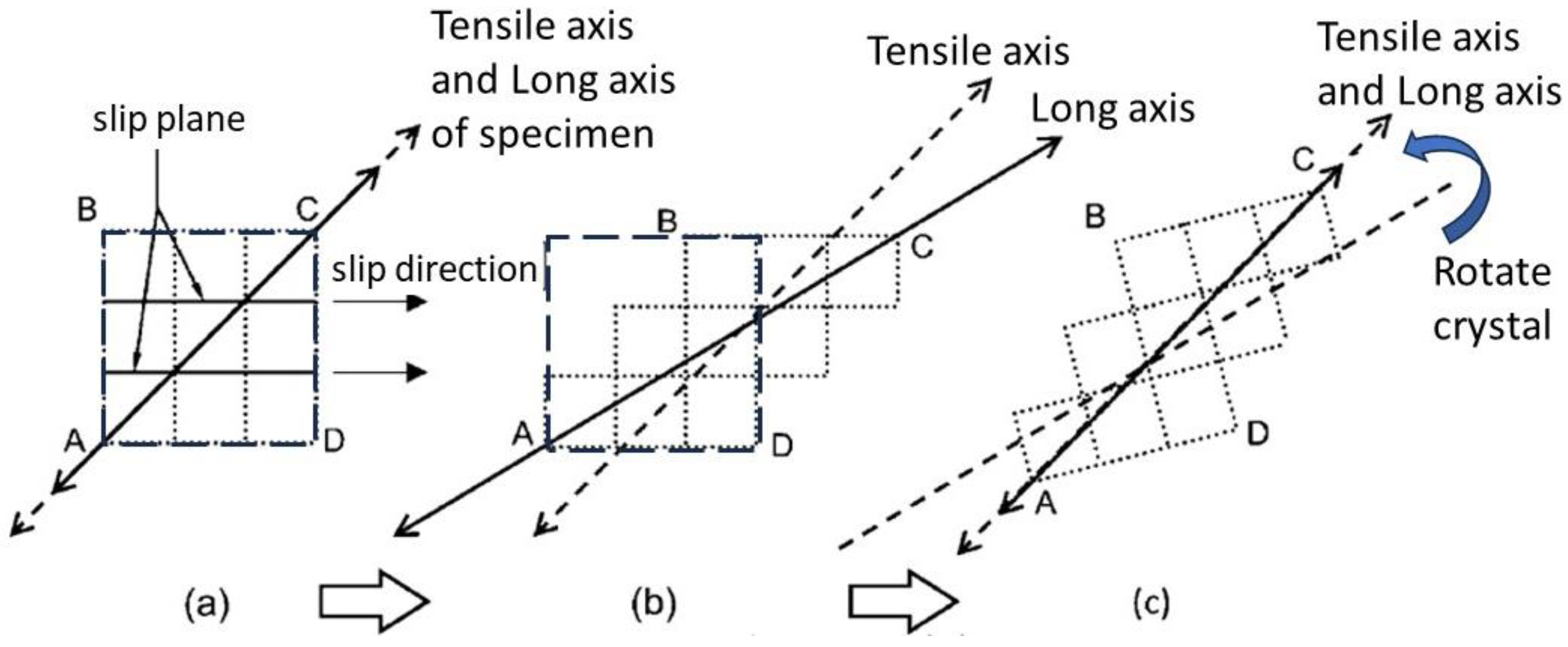
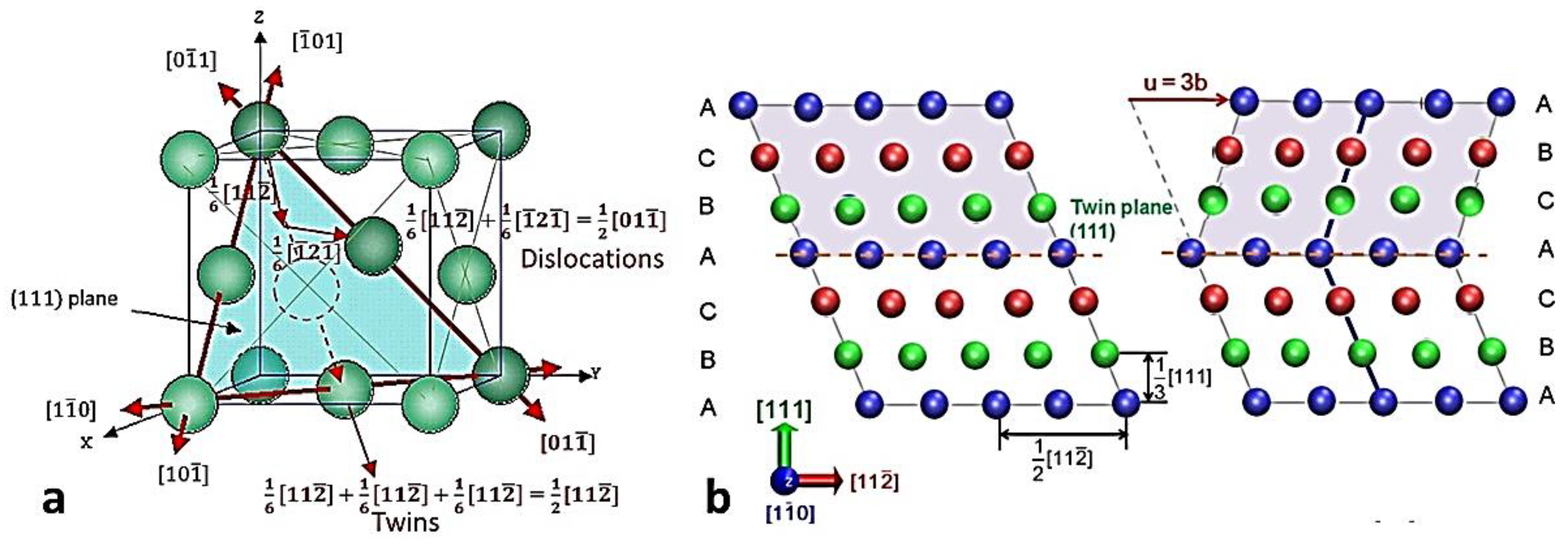
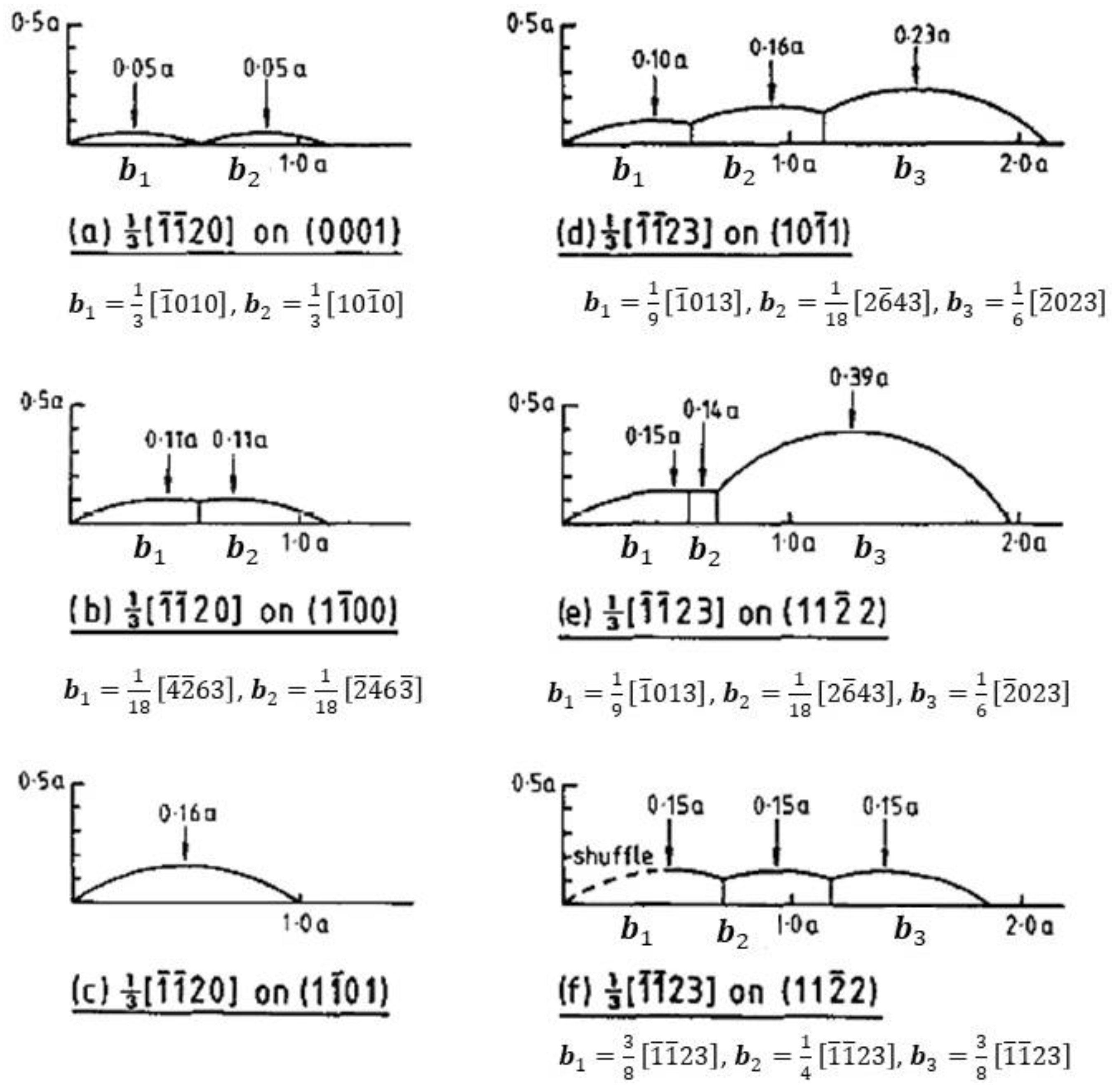
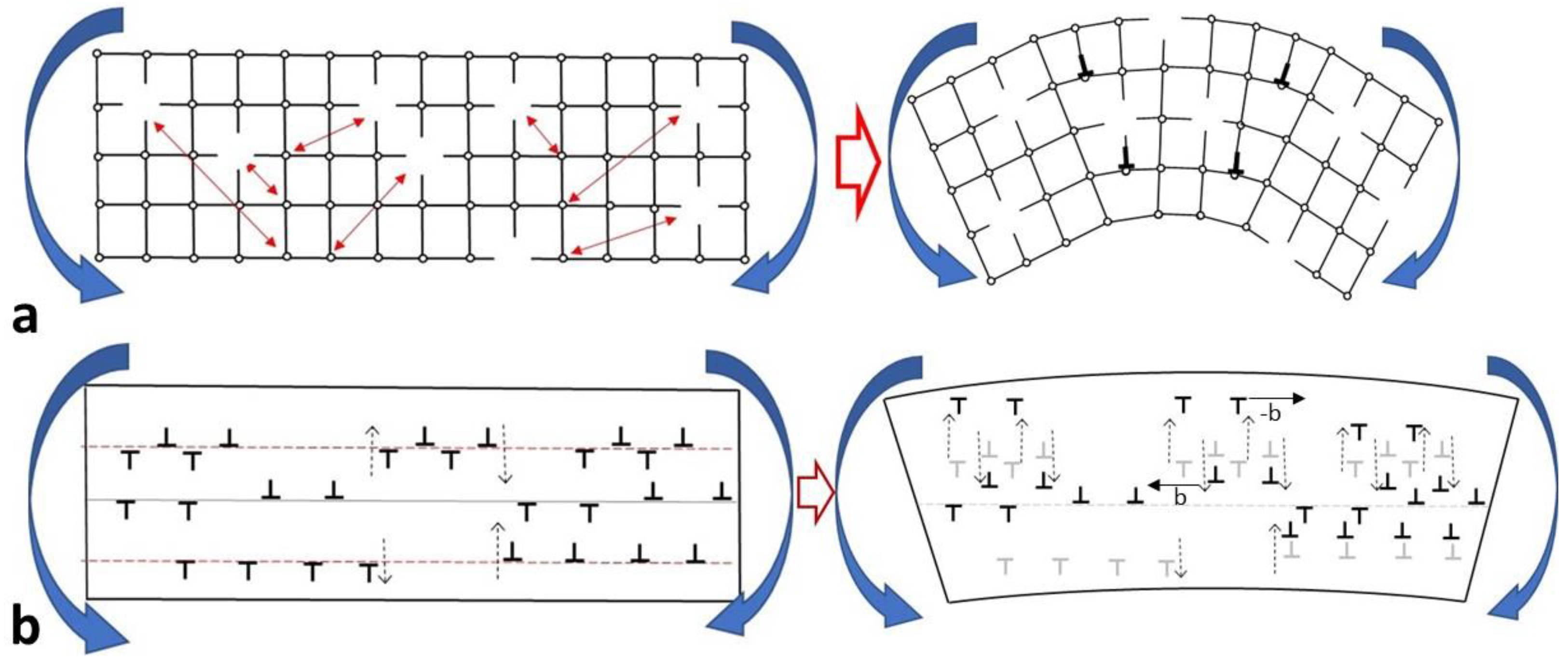


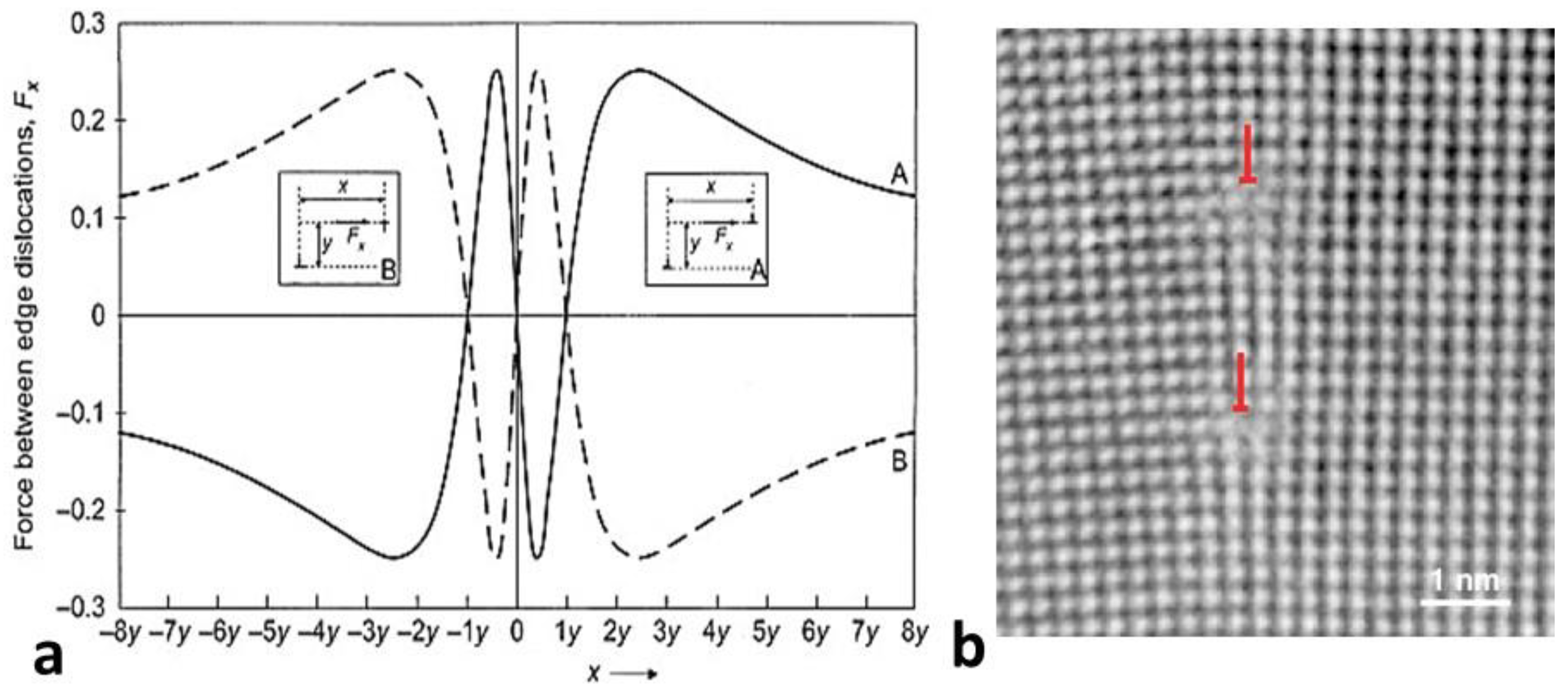
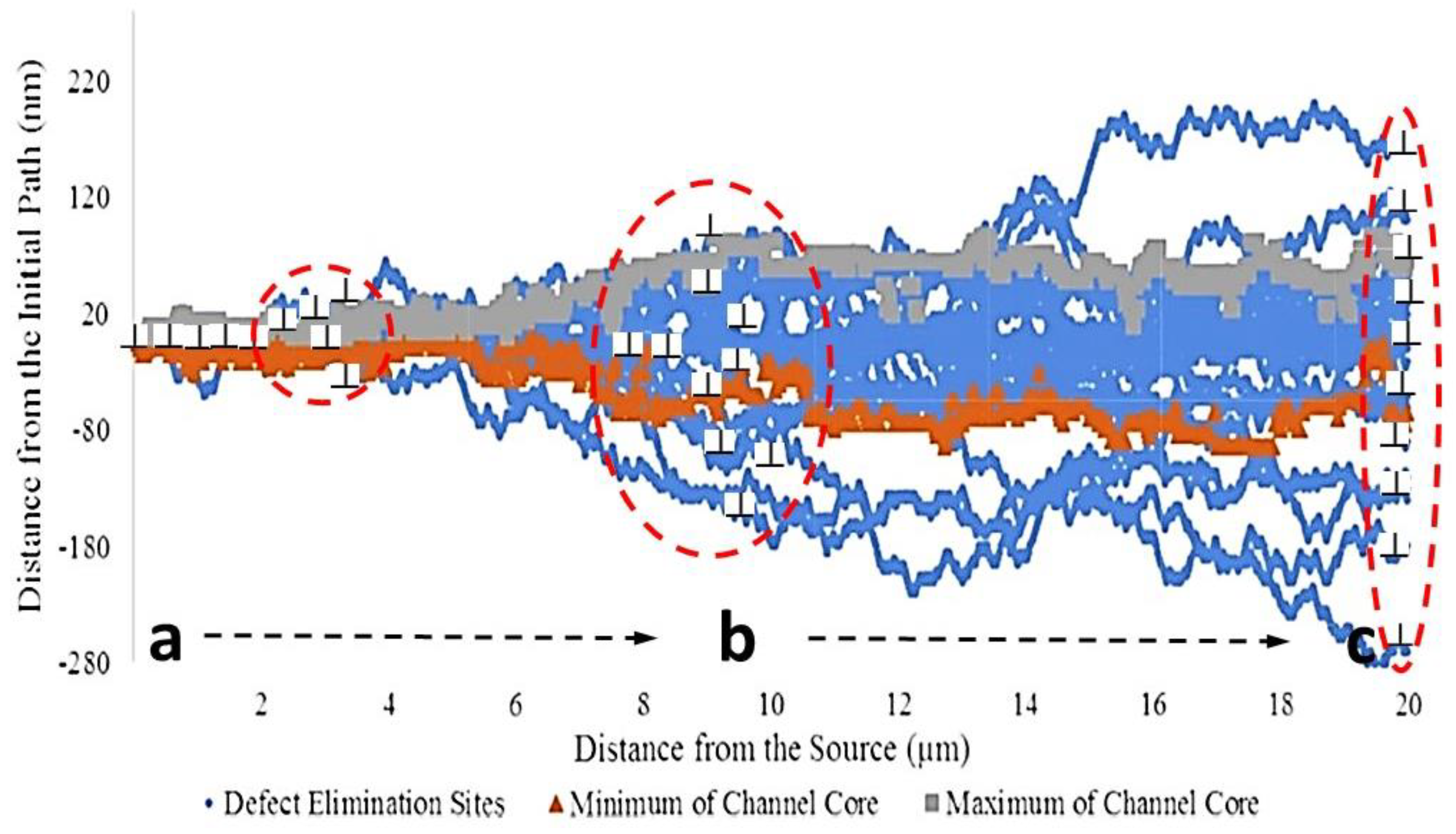
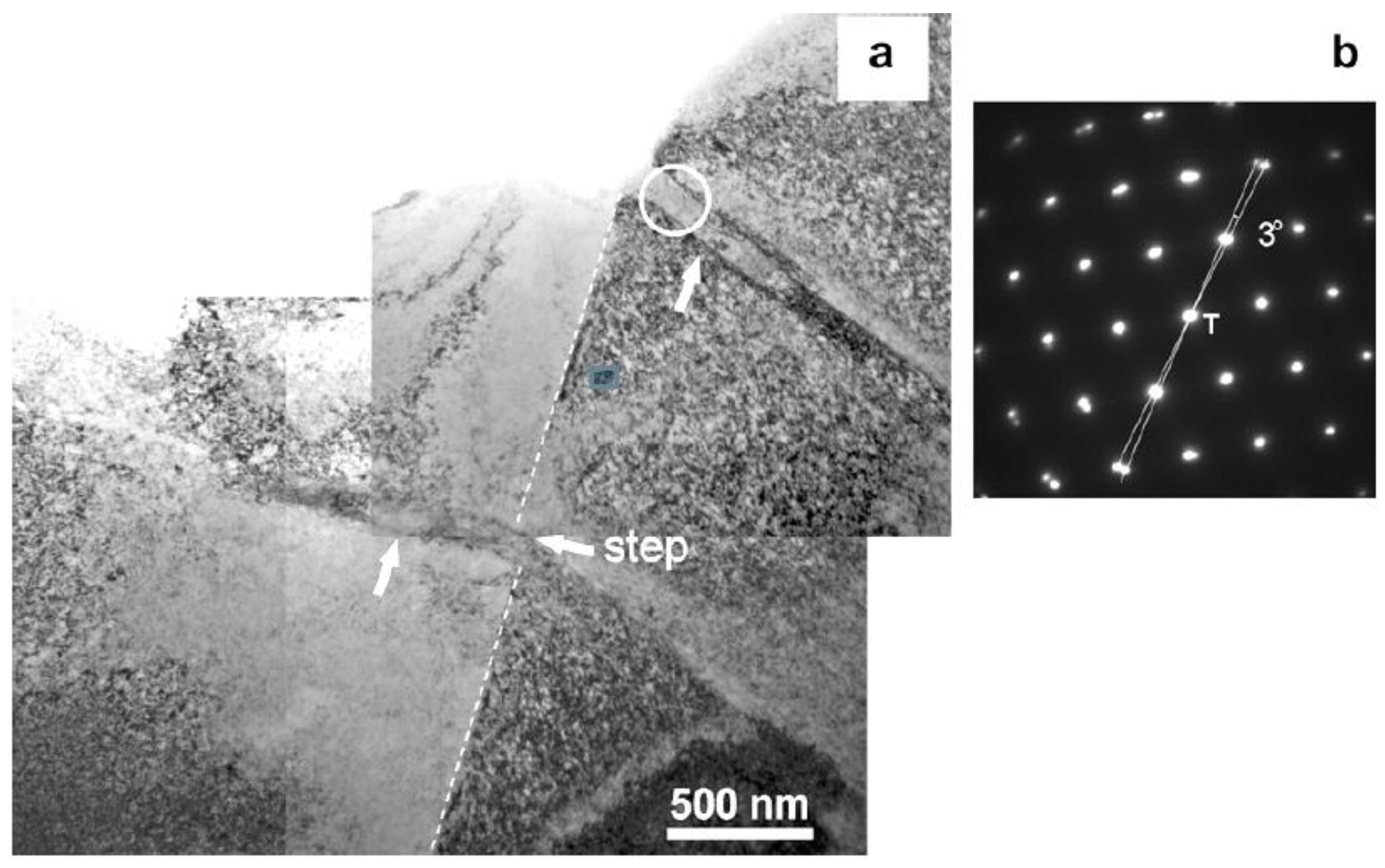

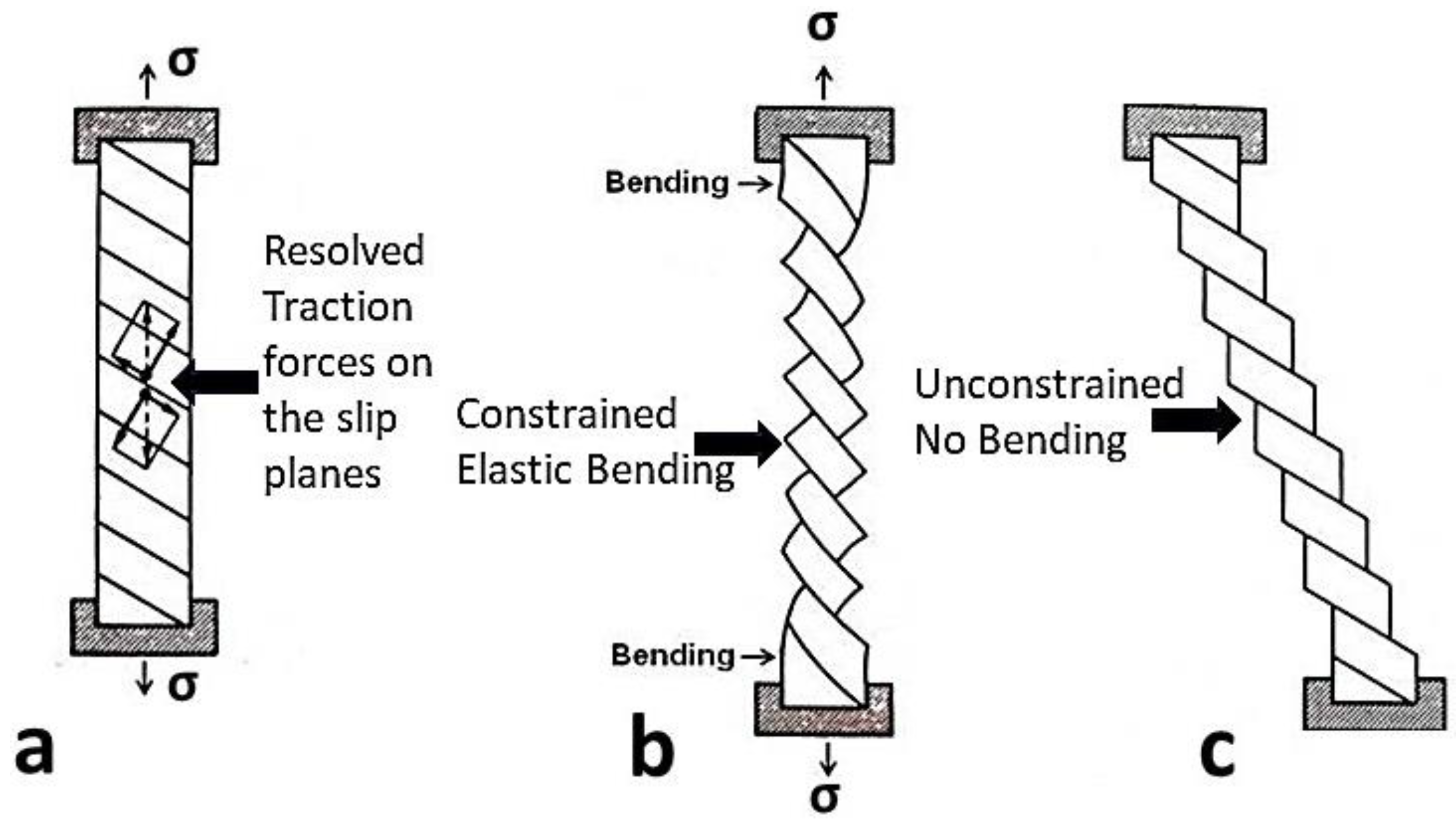

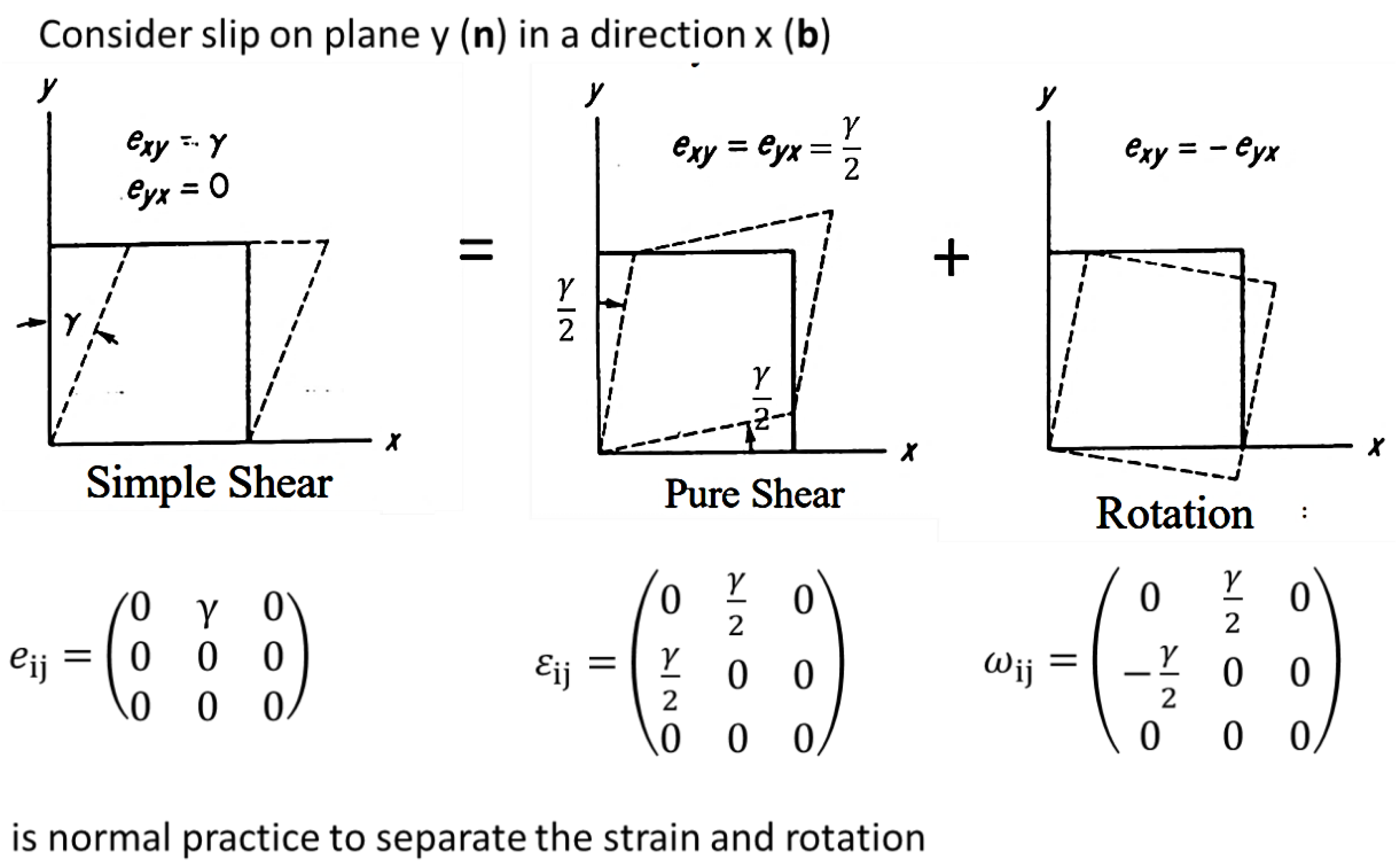
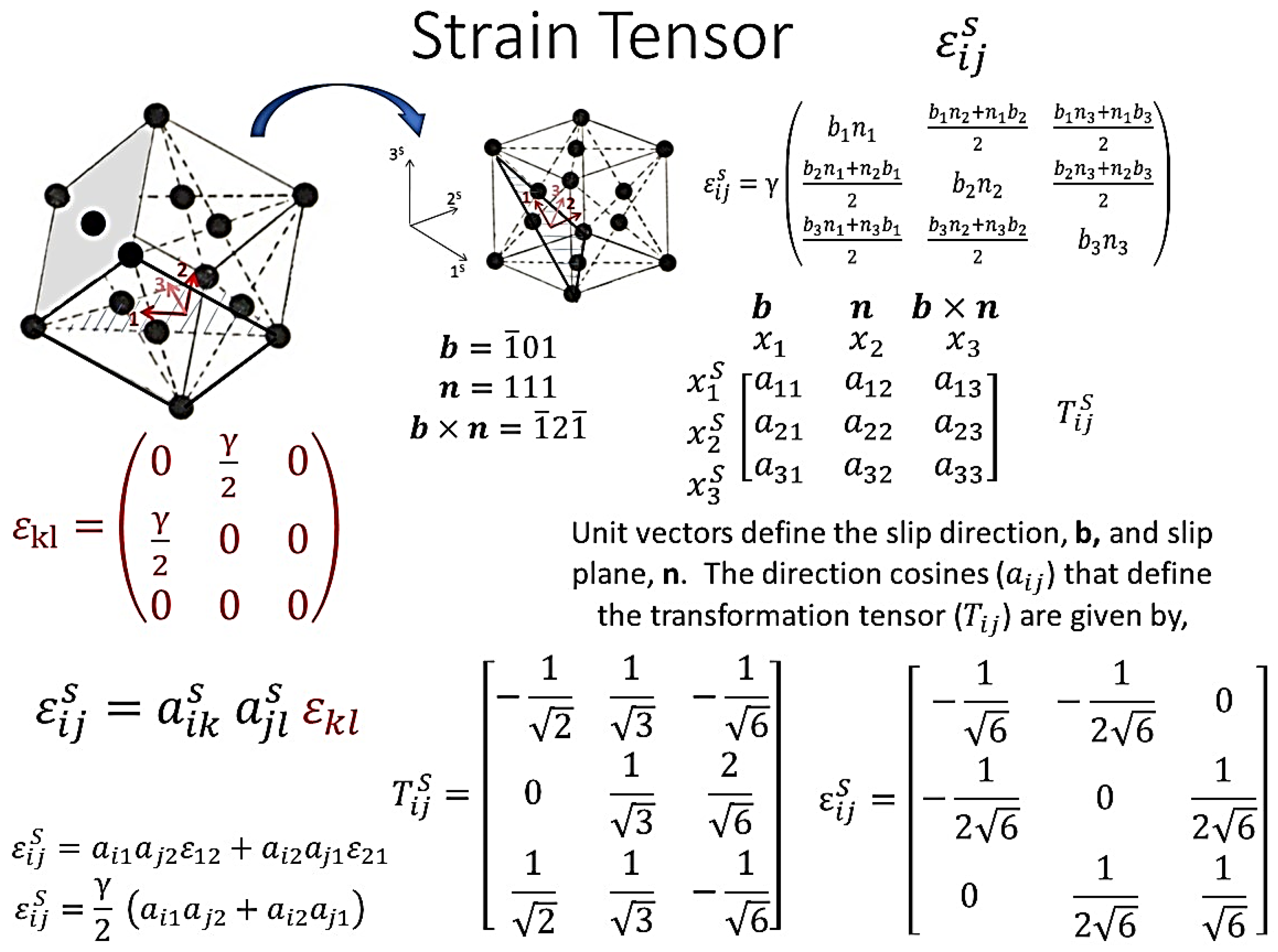
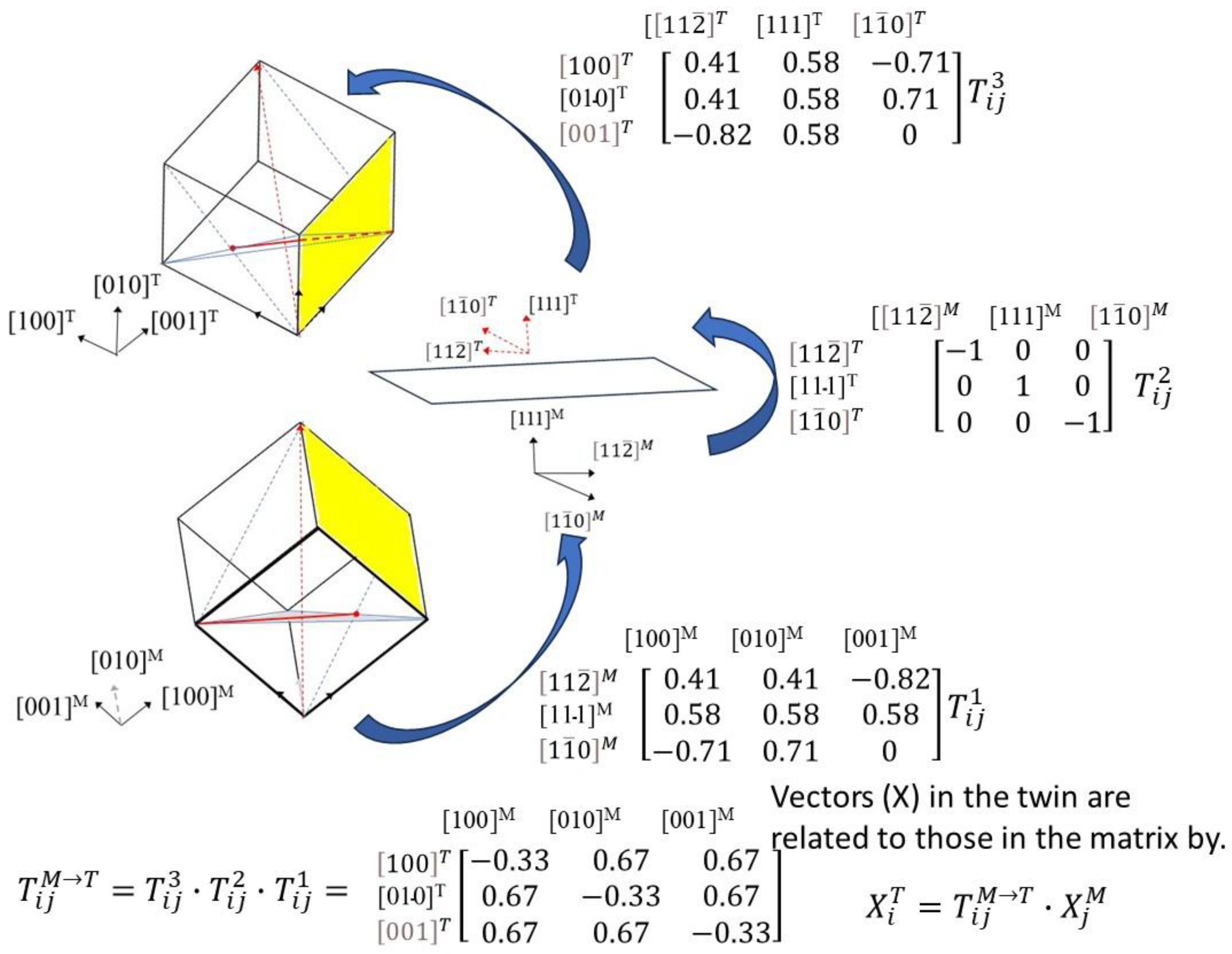
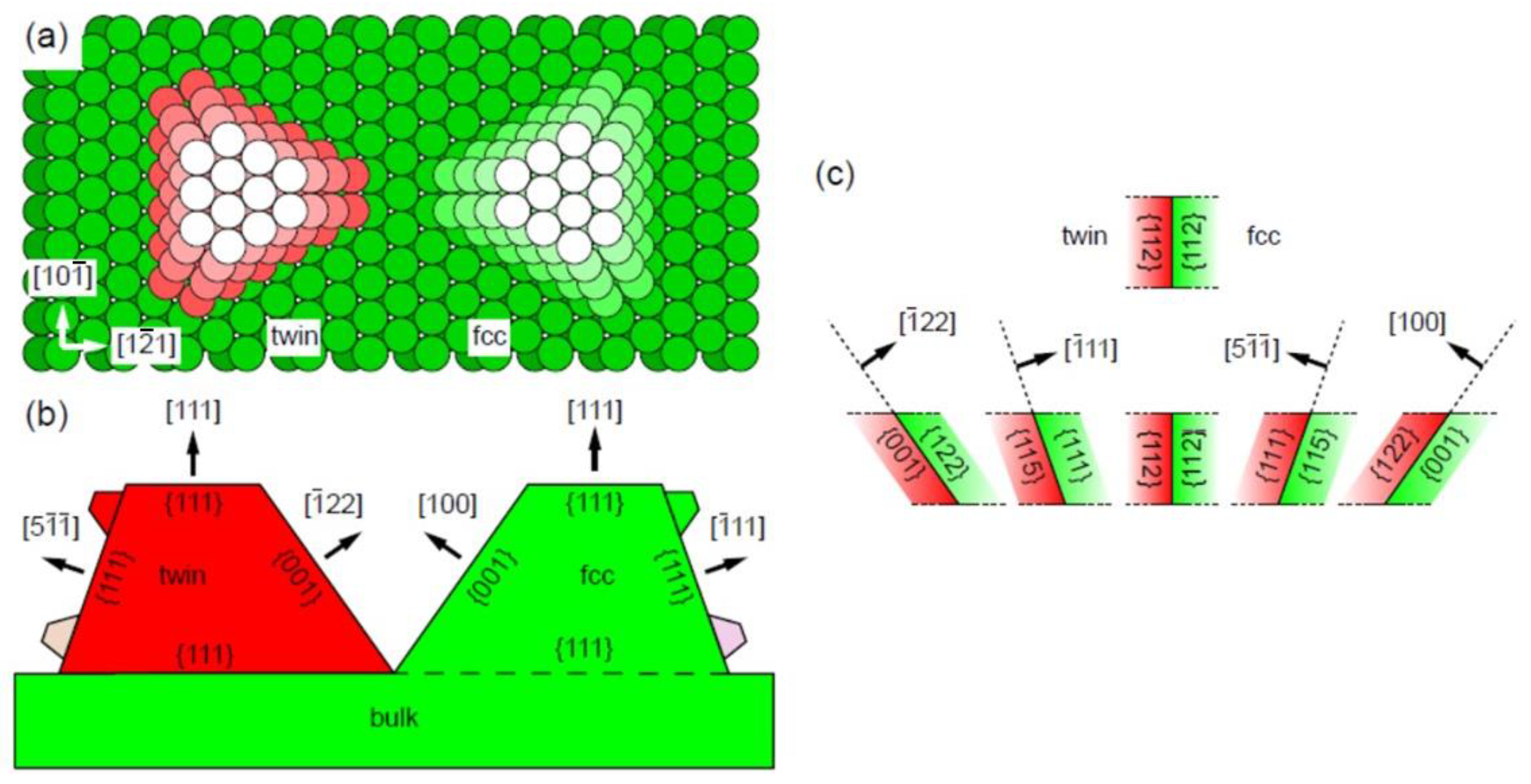
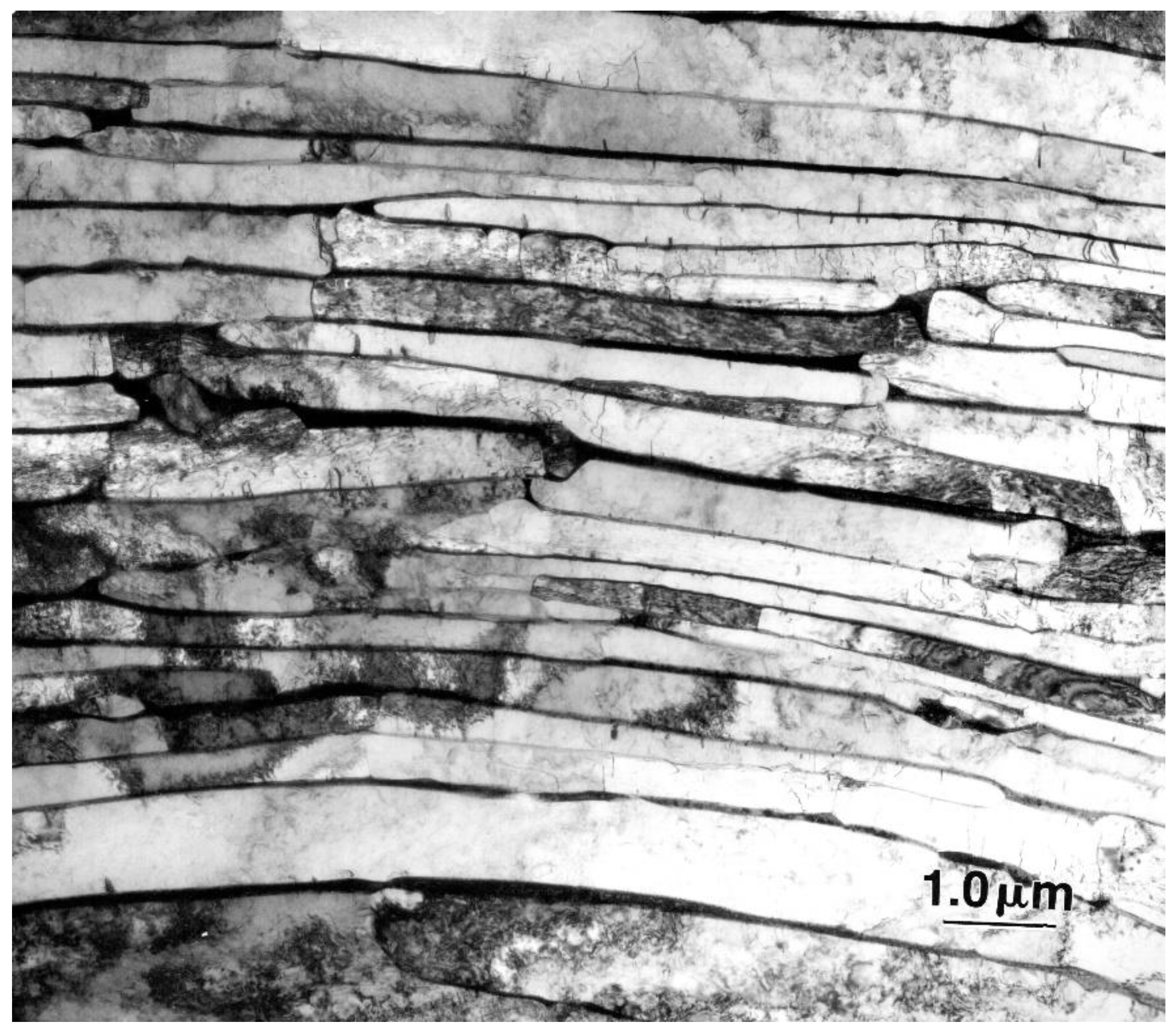
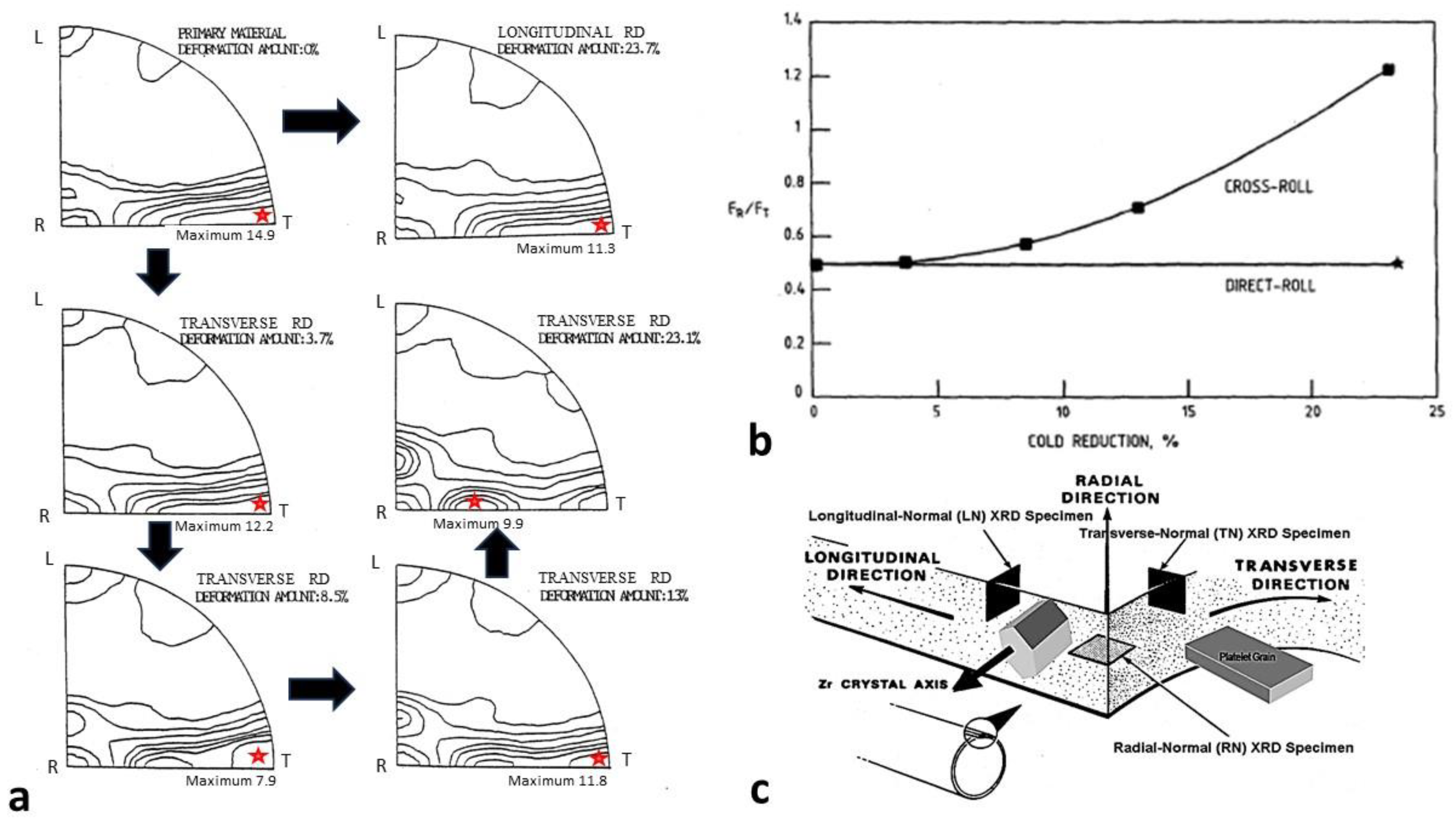

Disclaimer/Publisher’s Note: The statements, opinions and data contained in all publications are solely those of the individual author(s) and contributor(s) and not of MDPI and/or the editor(s). MDPI and/or the editor(s) disclaim responsibility for any injury to people or property resulting from any ideas, methods, instructions or products referred to in the content. |
© 2023 by the author. Licensee MDPI, Basel, Switzerland. This article is an open access article distributed under the terms and conditions of the Creative Commons Attribution (CC BY) license (https://creativecommons.org/licenses/by/4.0/).
Share and Cite
Griffiths, M. Crystal Orientation and Dislocation Slip. Metals 2023, 13, 1950. https://doi.org/10.3390/met13121950
Griffiths M. Crystal Orientation and Dislocation Slip. Metals. 2023; 13(12):1950. https://doi.org/10.3390/met13121950
Chicago/Turabian StyleGriffiths, Malcolm. 2023. "Crystal Orientation and Dislocation Slip" Metals 13, no. 12: 1950. https://doi.org/10.3390/met13121950
APA StyleGriffiths, M. (2023). Crystal Orientation and Dislocation Slip. Metals, 13(12), 1950. https://doi.org/10.3390/met13121950





